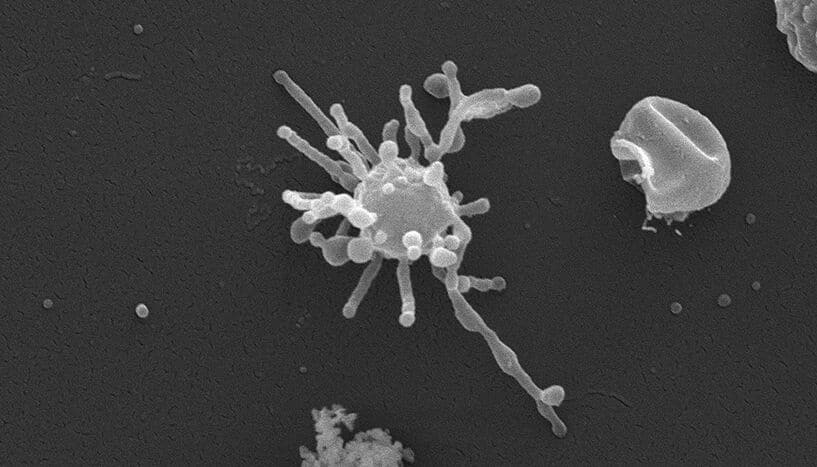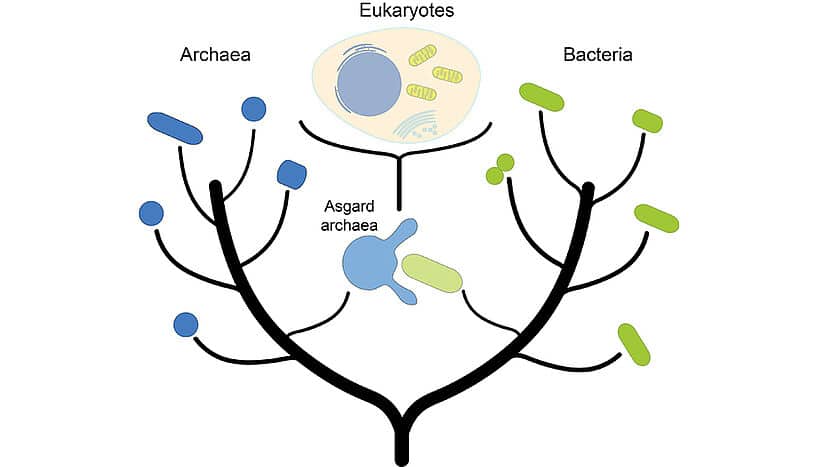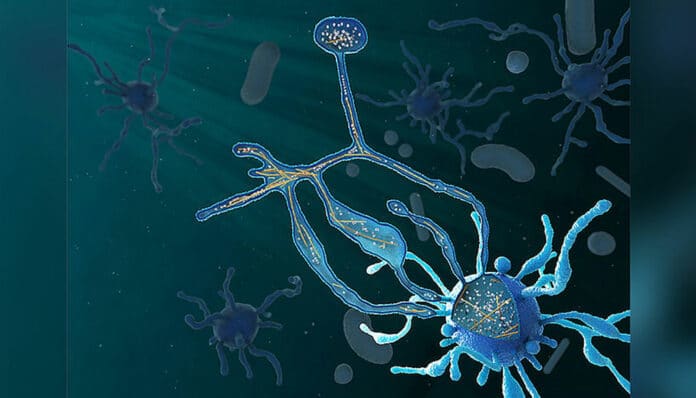The Asgard archaea are thought to be the eukaryotes’ nearest living relatives. In their genomes, numerous eukaryotic signature proteins (ESPs) have sparked theories about how eukaryotic cells evolved. Although never proven, ESPs may play a part in developing intricate cytoskeletons and complicated cellular structures.
A collaboration between the working groups of Christa Schleper at the University of Vienna and Martin Pilhofer at ETH Zurich– shed light on the origin of the complex organisms on Earth. Scientists have successfully cultivated a special archaeon and characterized it more precisely using microscopic methods. This Asgard archaea member demonstrates distinct cellular traits and might serve as an evolutionary “missing link” to more complex living forms like mammals and plants.
Most current theories presuppose that archaea and bacteria were crucial in the development of eukaryotes. It is thought that a close relationship between archaea and bacteria about two billion years ago led to the evolution of the first eukaryotic primordial cell. On 2015, the so-called “Asgard archaea,” which in the tree of life represent the closest ancestors of eukaryotes, were found through genomic analyses of deep-sea environmental samples. A Japanese study revealed the first pictures of Asgard cells in 2020 using enrichment cultures.

Scientists now succeeded, for the first time, in cultivating a representative of this group in higher concentrations. It is a native of Vienna, for instance, in the bank sediments of the Danube, and it originates from marine sediments on the shore of Piran, Slovenia. The ability to grow to high cell densities allows a particularly good study of this sample.
Thiago Rodrigues-Oliveira, a postdoc in the Archaea working group at the University of Vienna and one of the study’s first authors, said, “It was very tricky and laborious to obtain this extremely sensitive organism in a stable culture in the laboratory.”
Pilhofer said, “Our remarkable success in cultivating a highly enriched Asgard representative finally allowed a more detailed examination of the cells by microscopy. We used a modern cryo-electron microscope to take pictures of shock-frozen cells.”

“This method enables a three-dimensional insight into the internal cellular structures.”
Florian Wollweber, who spent months tracking down the cells under the microscope, said, “The cells consist of round cell bodies with thin, sometimes very long cell extensions. These tentacle-like structures sometimes seem to connect different cell bodies.”
“The cells also contain an extensive network of actin filaments thought to be unique to eukaryotic cells. This suggests that extensive cytoskeletal structures arose in archaea before the appearance of the first eukaryotes and fuels evolutionary theories around this important and spectacular event in the history of life.”
Microbiologist Christa Schleper said, “Our new organism, called ‘Lokiarchaeum ossiferum,’ has great potential to provide further groundbreaking insights into the early evolution of eukaryotes. It has taken six years to obtain a stable and highly enriched culture. Still, now we can use this experience to perform many biochemical studies and to cultivate other Asgard archaea as well.”
Journal Reference:
- Rodrigues-Oliveira, T., Wollweber, F., Ponce-Toledo, R.I. et al. Actin cytoskeleton and complex cell architecture in an Asgard archaeon. Nature (2022). DOI: 10.1038/s41586-022-05550-y
